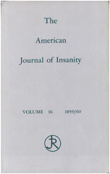Arousal, numbing, and intrusion: symptom structure of PTSD following assault
Abstract
OBJECTIVE: This study investigated hypotheses concerning the importance of symptoms of numbing in posttraumatic stress disorder (PTSD). METHODS: Symptoms of PTSD were assessed in 72 female rape victims and 86 female victims of nonsexual assault approximately 3 months after the crimes occurred. A principal-components factor analysis of subjects' symptoms was then undertaken. RESULTS: The analysis yielded three factors: arousal/avoidance, numbing, and intrusion. These were somewhat different from the symptom clusters in DSM-III-R, since effortful avoidance and numbing symptoms did not load on the same factor. Numbing symptoms appeared to be particularly important in identifying individuals with PTSD. CONCLUSIONS: The results imply that there are two patterns of posttrauma symptoms, one characterizing PTSD and the second characterizing a phobic reaction.
Access content
To read the fulltext, please use one of the options below to sign in or purchase access.- Personal login
- Institutional Login
- Sign in via OpenAthens
- Register for access
-
Please login/register if you wish to pair your device and check access availability.
Not a subscriber?
PsychiatryOnline subscription options offer access to the DSM-5 library, books, journals, CME, and patient resources. This all-in-one virtual library provides psychiatrists and mental health professionals with key resources for diagnosis, treatment, research, and professional development.
Need more help? PsychiatryOnline Customer Service may be reached by emailing [email protected] or by calling 800-368-5777 (in the U.S.) or 703-907-7322 (outside the U.S.).



